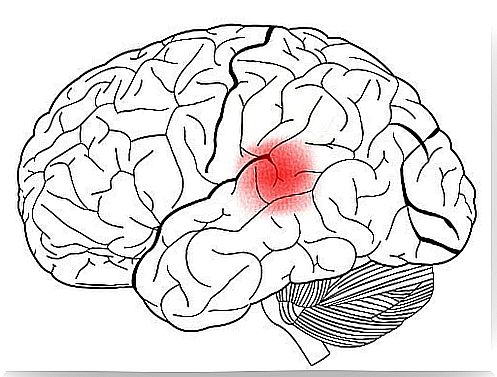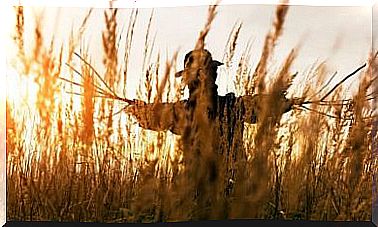Wernicke’s Area And Language Understanding

Language understanding is the human being’s ability to process and understand spoken and written language. This ability has helped us greatly throughout our evolutionary history. The ability to communicate effectively has allowed us to collaborate and create complex partnerships to cope with a hostile world. For this reason, in the brain we find biologically ingrained structures, such as Wernicke’s area.
A key aspect of the neural disposition of language is that it is lateralized. In other words, the vast majority of structures related to language are found in the left hemisphere. It is true that there are studies that affirm that processes such as jokes, pragmatics and sarcasm are managed in the right hemisphere. Thus, Wernicke’s area, responsible for understanding language, is in the left hemisphere. More specifically in zones 21 and 22, according to the Brodmann areas.
In this article we are going to talk about two fundamental aspects to understand the implication of Wernicke’s area in language. The first of these will be its anatomical and functional aspects. And the second, about Wernicke’s aphasia, caused by lesions in that area.
Anatomy and Functionality of Wernicke’s Area
Apart from Brodmann’s zones 21 and 22, which represent the nerve center of Wernicke’s area, there are other structures involved in understanding language. When we talk about the extended Wernicke area we also include zones 20, 37, 38, 39 and 40. Which participate in the association of words with other types of information.

Wernicke’s area is closely linked to the primary auditory cortex, something that is consistent with its role in understanding spoken language. At an anatomical level, it is also noteworthy to talk about the great connections that said system has with the drill area. This area is primarily responsible for understanding language. These two areas (Wernicke and Broca) are connected by a series of neuronal bundles, which in turn form the so-called arcuate fasciculus.
The functions performed by the Wernicke area are the following:
- Understanding of language , both in its spoken and written form.
- Management of language semantics, transforming words to their meaning or vice versa.
- Planning in the production of discourse, especially in its semantic and pragmatic aspects.
These functions are the pillars that support an adequate understanding of the language that allows communication. Therefore, injuries to Wernicke’s area can have significant negative consequences when it comes to using language and coping with communication. In the next section we will talk about the specific consequences of injuries in this area.
Wernicke’s aphasia
Wernicke’s aphasia is a language production disorder caused by lesions in Wernicke’s area. This disorder is characterized by unstructured and meaningless speech, together with an almost non-existent understanding of language. But while the message is meaningless, the speech is delivered smoothly and effortlessly. This is because the production of the language is intact.
In contrast to Broca’s aphasia, the patient uses a large number of functional words (el, de, ante, un…), using complex tenses and subordinate sentences. Instead, they use few words with content, and these words do not link together to form meaning. This is mainly due to an effect called semantic paralexia, a phenomenon whereby instead of saying the word they are looking for, they say a different one with a similar meaning. This occurs because Wernicke’s area is not precise in selecting words through meaning.

A key aspect of Wernicke’s aphasia is that language fluency is completely intact. Subjects with this disorder have no problem maintaining effortless speech. Of course, devoid of meaning. It is because the brain structure responsible for producing speech is Broca’s area. This helps us to understand that Wernicke’s area is specialized in the understanding and semantics of language. Despite its connections with other areas, these are able to continue its operation independently.
A curiosity…
Finally, there is a curious process when a lesion appears in the language areas at a very young age. Due to the great plasticity of the brain, if the left hemisphere is damaged, it is possible that the language develops in the right hemisphere. Thanks to this, brain lesions before language consolidation can be reduced, thus achieving normal or practically normal development.









